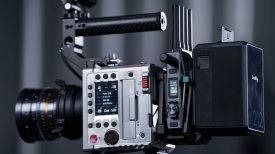By technical editor Matt Allard:
The quality of ND filtration is often overlooked but incredibly important when using modern digital cameras outside. As the sensitivities of sensors increase they become harder to filter when used in bright light – especially if you want that ultra-thin depth of field look.
Without ND, you can’t shoot outside in the bright sun without compromising your shutter speed/angle. You really need to understand how your ND works and what it could be doing to your image.
I recently discovered the True ND filter range while visiting Japan. I had never heard of them before and you probably haven’t either. They make the bold claim that unlike other NDs their filters produce no colour shift and have no IR pollution. They are marketed as having true neutrality – I figured I had to check it out.
I conducted a variety of tests and put the True ND filters up against the Tiffen and Redrock Micro ND Filters. The comparison was technical as I could make it given the equipment I had to work with. My base was always the Sony F55 with clear ND, which was balanced with a 18% grey card. By adding ND after balancing the camera I could see if there was any colour shift between the different filters.
Like most people I have never really taken the time to look into how ND filters shift colour, so the results were quite surprising. While a lot of modern day video cameras have built-in ND and IR protection even these can produce a certain amount of colour shift.
There is of course an argument that you could just adjust the white balance every time you add ND. Well yes, you could…but you would be changing the colour temperature of your entire scene. I would prefer neutrality because I want to have a consistent colour temperature and look whether or not I’m running ND.
This wasn’t a blanket ND filter test as I compared only three different filter manufacturers’ offerings. I will leave you to judge the results of the tests yourselves, but for me the True ND was by far the most neutral of the three. It wasn’t even really close. They do retail for $600 each so they are not cheap.
So did they live up to their claims of true neutrality? They are certainly super-close. I was very impressed by the results and I don’t say that lightly. One of the other things that surprised me was just how consistent the True ND filters were at high levels of ND (0.9, 1.2, 1.5). The Tiffens started to suffer from bad colour shift once you got over 0.6. To my eye, the True ND 0.9 actually out-performed the built-in 0.9 ND on the Sony F55.
I am not the only one to come to this conclusion. You can check out this test by Ryan Walters.
For more information on True ND filters you can go to:
mitomo.co.jp
or email [email protected]
Here’s the video test (warning! it is 28 minutes long). There was no colour correction or sharpening done to any of the footage.
True ND Filters from Matthew Allard on Vimeo.







